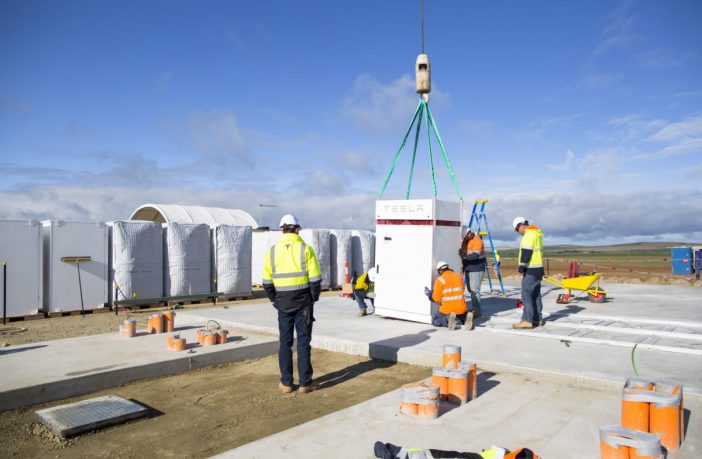The Hornsdale Power Reserve‘s (HPR) 50%, AU$71 million (US$51.9 million) storage expansion is complete. Neoen’s HPR, also known as the Tesla Big Battery, is now 50 MW/64.5 MWh bigger, with an upgraded capacity of 150 MW.
The A-Team of Tesla – the South Australian government, Clean Energy Finance Corp. (CEFC), and the Australian Renewable Energy Agency (ARENA) – have cobbled together the finances, and the gumption, to expand the already highly successful mega-battery. Now, the expanded HPR can make history as the first battery to provide grid-scale inertia services and fast-frequency response on Australia’s National Electricity Network (NEM).
Louis de Sambucy, managing director of Neoen Australia, said that testing could now begin on HPR’s synthetic or digital inertia capabilities, as the company “reinforces its contribution and commitment to South Australia’s 100% renewable energy target.” In the first half of 2020, HPR virtually tripled the French developer’s storage revenue year on year.
Neoen’s storage revenue jumped from €8.4 million (US$9.9 million) in the first half of 2019 to €24.6 million in the first half of this year, due to “an exceptional non-recurring event in Australia … the key factor behind this very hefty increase.” The “exceptional non-recurring event” was a tornado in late January, which pulled down the Heywood interconnectorbetween South Australia and Victoria. South Australia was effectively isolated from the rest of the NEM for 18 days.
Expanded remit
The successful testing of HPR’s synthetic inertia services could result in changes to the Australian Energy Market Operator’s (AEMO) Market Ancillary Services Specifications, which would open up more space for energy storage to participate in the market. ARENA, which contributed an AU$8 million grant toward the expansion, also believes the upgraded battery could also help to reduce renewable curtailment in South Australia. Indeed, AEMO’s Chief System Design and Engineering Officer, Alex Wonhas, said that the expansion enabled the “optimal use of this world leading battery to support higher levels of renewable integration.”
“Of critical importance to ARENA is the valuable information we will gain in showing that batteries are capable of providing inertia services and fast frequency responses to the grid, paving the way for potential regulatory changes and revenue streams to incentivise further grid scale batteries to be built across Australia,” said ARENA CEO Darren Miller
Author: Blake Matich
This article was originally published in pv magazine and is republished with permission.















